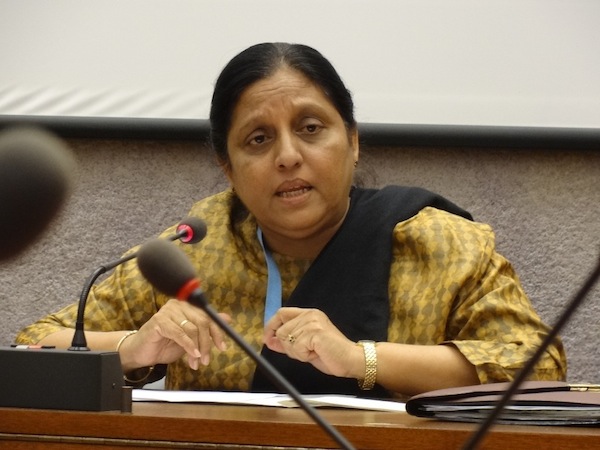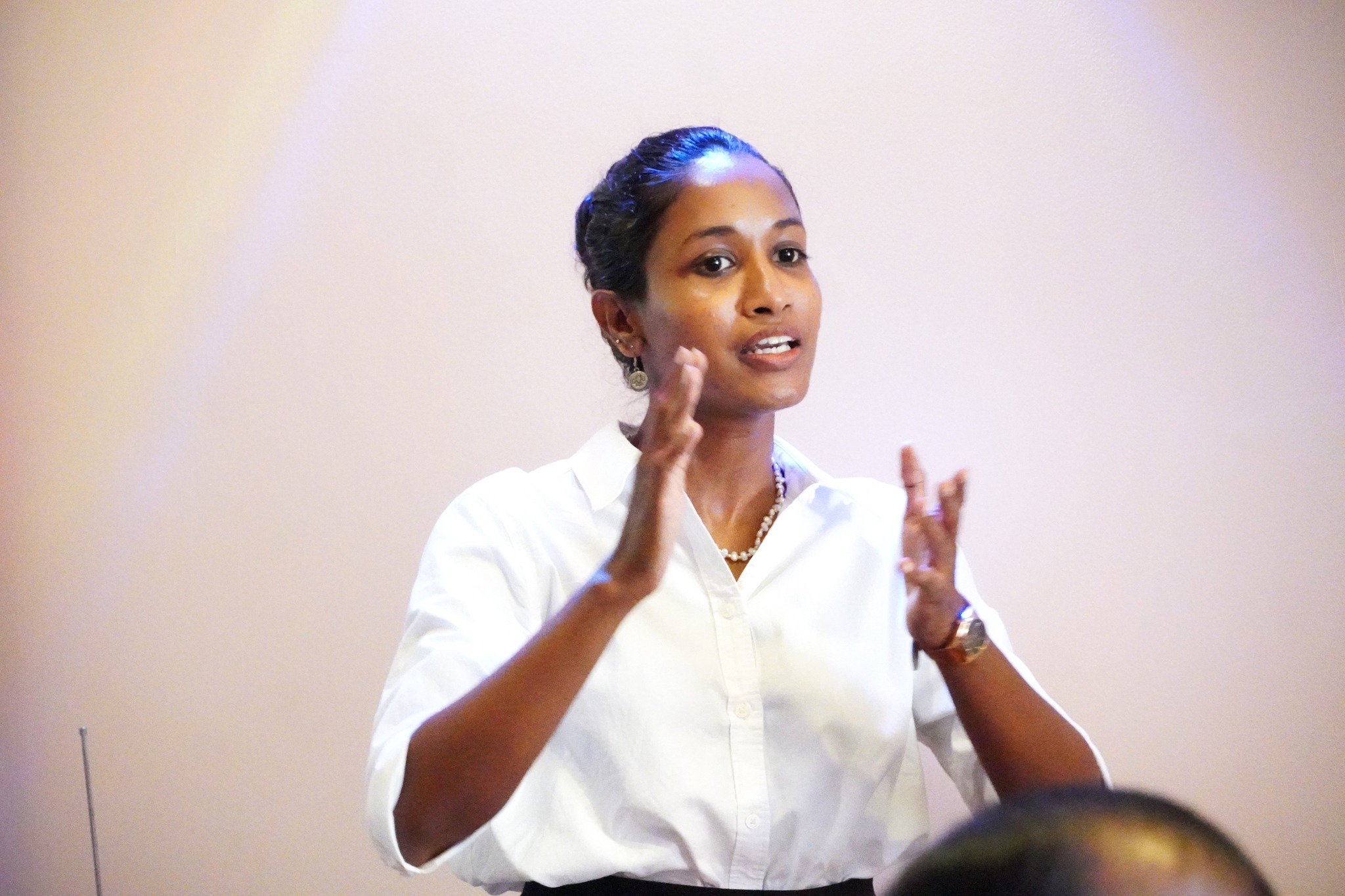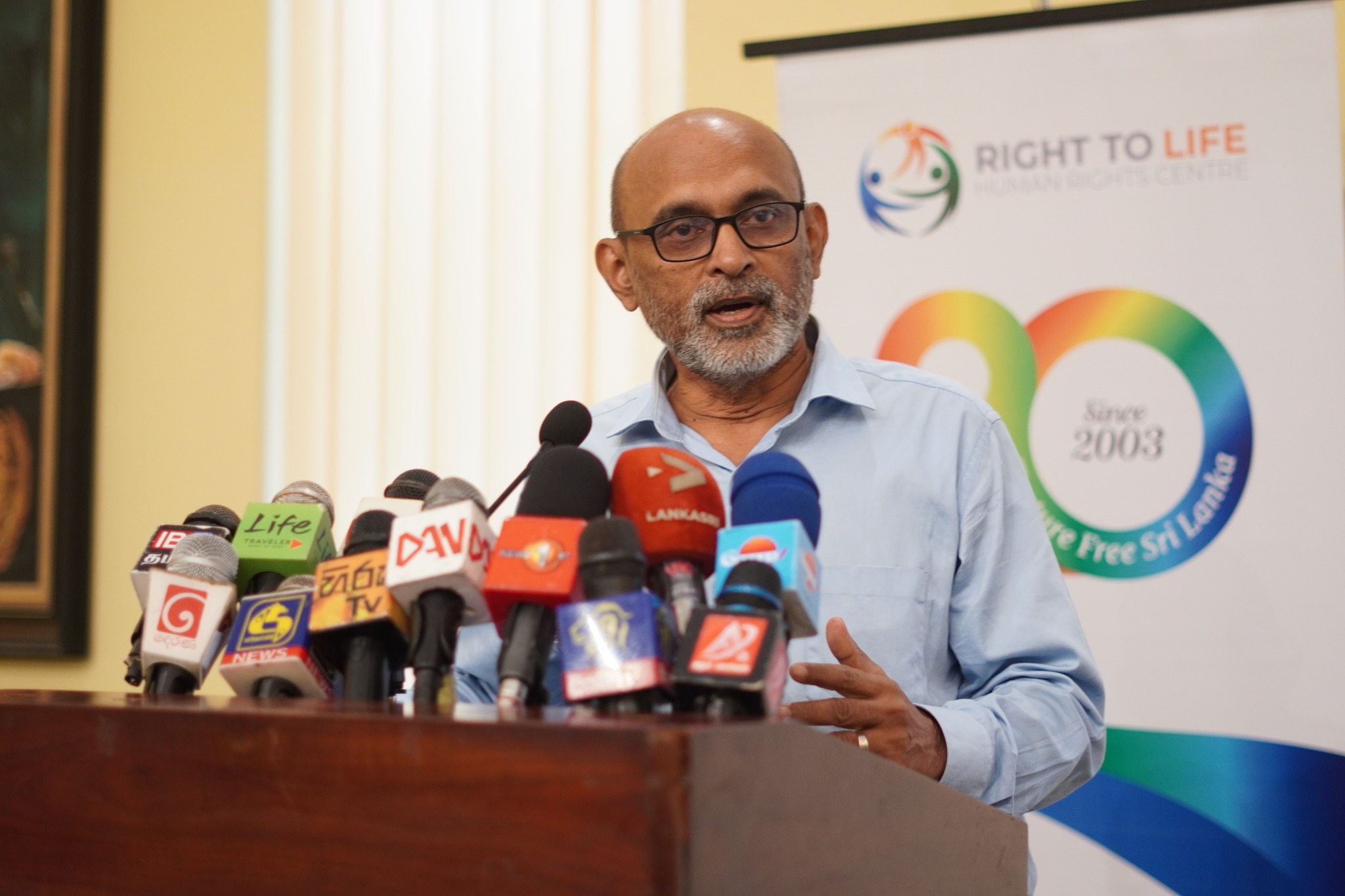(The opinions expressed in this interview with journalist and political analyst Sirimal Wijesinghe from Carbon TV, hosted on the PUJA website, are strictly personal and do not represent the views of the PUJA website or its affiliates.)
“Among the thousands of women and people who were subjected to sexual violence, torture, and inhuman killings during Sri Lanka’s ethnic conflict, Isaipriya is just one. I wish to talk about Isaipriya as a symbol for all of them,” said Thakshila Swarnamali, a writer, researcher, and women activist actively engaged in studies and advocacy for minority rights peace and reconciliation over a long period.
By the year 2000, the Liberation Tigers of Tamil Eelam (LTTE) was running a de-facto state with unofficially demarcated territories in the Northern and Eastern provinces in opposition to the Sri Lankan government. Kilinochchi was considered the de facto capital of this administration. Various aspects of governance such as military, police, judiciary, administration, media, and tax collection were functioning in these areas. The official government of Sri Lanka had no control over the population living in these areas, and the LTTE prohibited contact between the inhabitants and the Sri Lankan state. Entry to and exit from LTTE-controlled areas were also heavily restricted. In 2001, the government signed a ceasefire agreement with the LTTE, leading to the opening of the A9 highway from Omanthai beyond Vavuniya to Elephant Pass in the south of the Jaffna peninsula. It was only after this that the people in the South gained some understanding of the unofficial state.
Isaipriya’s real name was Dharmarajah Shobana. Born in 1982 in the Neduntivu (Delft Island) of Jaffna, she was attending Vembadi Girls’ High School when, in 1995, the Sri Lankan military reclaimed Jaffna from LTTE control through Operation Riviresa. During this time, hundreds of thousands of Tamil civilians migrated to the LTTE-controlled Vanni region after a long trek, following an LTTE directive. While many later returned to their native villages under government control, Shobana’s family did not. Shobana became attracted to the LTTE and joined its media and cultural wings.
Isaipriya became a prominent figure as a news presenter and actress in LTTE TV and propaganda films. She was a recognizable face on the Tamil Eelam ‘Nitharsanam’ television service. She was also a singer and lyricist, contributing to cultural productions within the LTTE.
In 2007, Isaipriya married an LTTE combatant and gave birth to a child in 2008. Thakshila Swarnamali notes that the child died in an airstrike when he was six months old, and her husband also died in the war shortly after.
In May 2009, during the final stages of the civil war, Isaipriya was reportedly taken into custody by the Sri Lankan Army. Later, her body was found under controversial circumstances. Photographs and video evidence released by international media and human rights organizations suggested she had been extrajudicially killed. Isaipriya’s death became a symbol of broader issues of accountability and justice concerning wartime atrocities in Sri Lanka.
There are very few women in Sinhala society who openly speak out on behalf of war victims. Thakshila Swarnamali argues that Tamil nationalism emerged as a response to decades of oppression by a Sinhala-majoritarian state. “What we face is a history written by the victors of the war. We need to talk about Isaipriya because confronting the truth is essential. The war in Sri Lanka was a struggle by an oppressed people against an oppressive state, and the measures taken by the state to suppress it resulted in these tragedies. We must resist state terrorism. Repeated events like Isaipriya’s killing serve to pass on collective memories, which is politically significant. It transcends mere cultural elements and carries political weight, as our current situation demands clarity. This is part of acknowledging and revealing crimes,” Swarnamali states.
Treatment of Combatants and Non-Combatants in War According to International Law
The treatment of surrendered combatants and sympathizers during war and rebellion is governed by International Humanitarian Law (IHL), particularly the Geneva Conventions, which establish rules to ensure the humane treatment of individuals no longer participating in hostilities.
- Humane Treatment
All individuals, regardless of nationality, religion, ethnicity, or political beliefs, must be treated humanely. Torture, violence, humiliation, or any form of cruel, inhuman, or degrading treatment is prohibited. - Prohibition of Killing
Killing or executing surrendered individuals constitutes a war crime. Those who surrender must be detained in accordance with the law. - Protection as Prisoners of War (POWs)
Under the Third Geneva Convention, surrendered combatants who qualify as POWs are entitled to specific protections, including:- Adequate food, shelter, and medical care.
- Protection from violence, intimidation, and public curiosity.
- Communication with their families and access to humanitarian aid.
- Civilians
Civilians who show compassion but do not directly participate in hostilities must not be targeted or punished under the Fourth Geneva Convention. - Fair Trials
If individuals are suspected of crimes, they are entitled to a fair trial. Executions or punishments without trial are strictly prohibited. - Customary Human Rights Law
In addition to the Geneva Conventions, customary human rights law prohibits reprisals against surrendered individuals. - Protection After Surrender
Surrender must be unconditional, and the party accepting the surrender must not exploit it for illegal purposes.
Under the Rome Statute of the International Criminal Court (ICC) and other international treaties, unlawful killings or torture of surrendered individuals constitute war crimes and are violations of these established laws.


